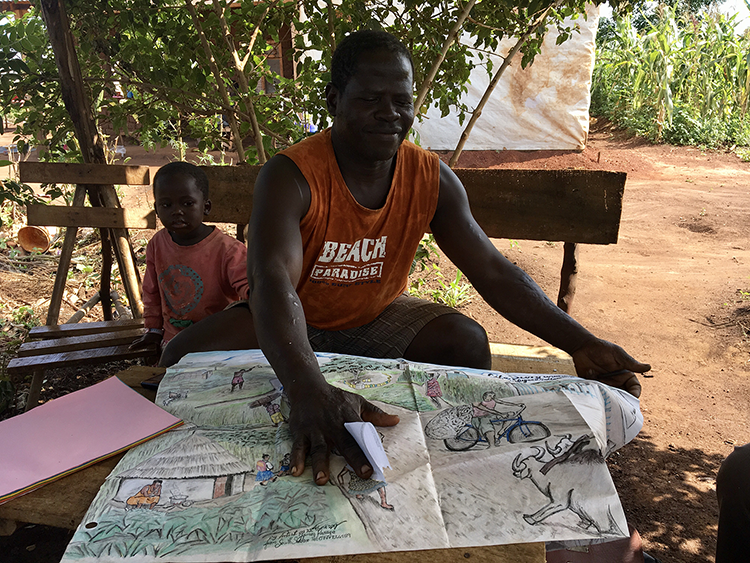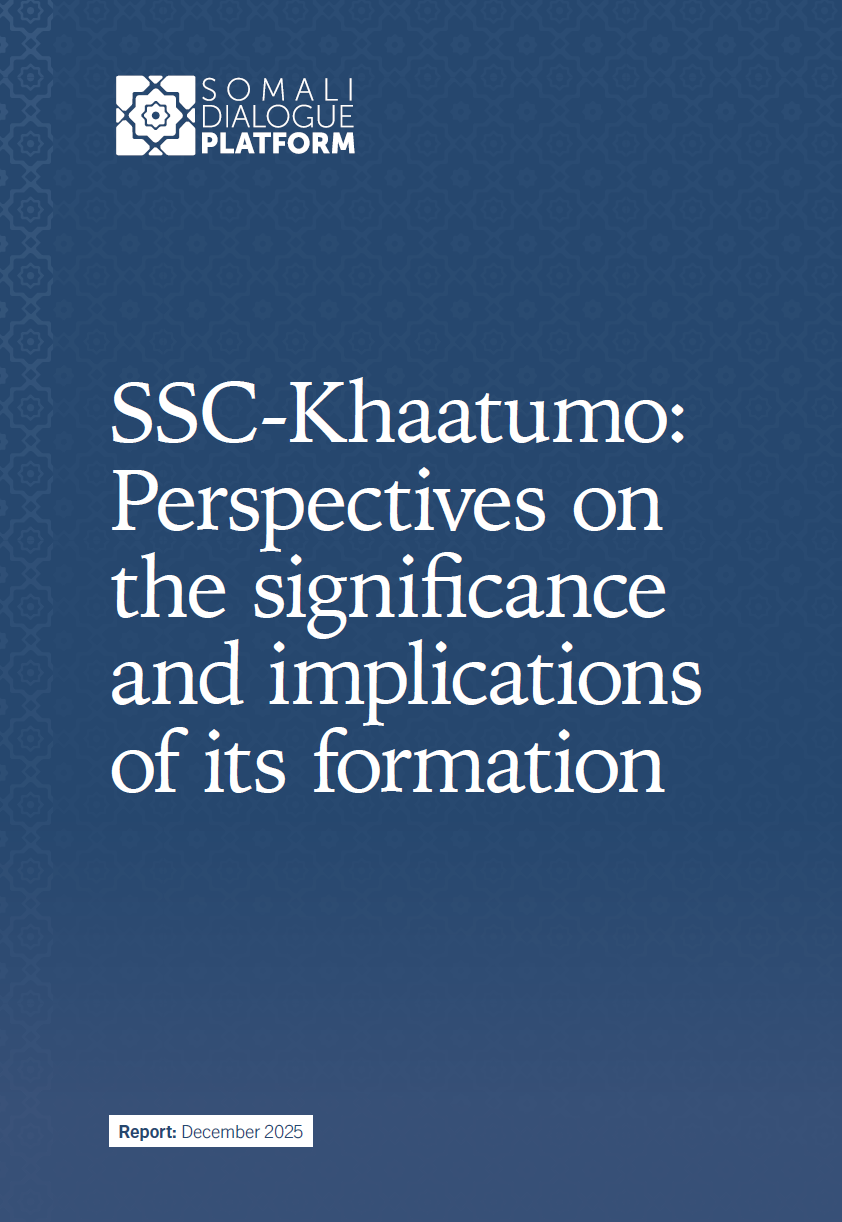RVI’s ongoing South Sudan Customary Authorities Project is seeking to deepen understanding of the changing role of chiefs and traditional authorities in South Sudan. As part of this project, RVI has trained a team of researchers in oral history to conduct research with customary authorities and their constituents in different parts of South Sudan, and with displaced communities outside its borders. The letter is part of a series published by RVI from each of the research sites, to illustrate the diversity of the research projects and the ways in which customary authorities are represented across different communities.
This letter from Arua—a city located in West Nile region in the northwest of Uganda, close to the borders with South Sudan and the Democratic Republic of Congo (DRC)—was written by Bruno Braak, a PhD candidate at Leiden University’s Van Vollenhoven Institute for Law, Governance and Society (VVI), who is also a senior researcher in the SSCA project, working with South Sudanese researcher John Justin Kenyi. Bruno and John’s project focuses on the role that customary authorities have among displaced communities from Western Equatoria in Uganda. As many as 4 million South Sudanese—an estimated third of the country’s population—are currently displaced, and over a million have crossed the border to Uganda. A joint publication between RVI and VVI will follow.
When a South Sudanese chief died in Arua in 2017, the place for his burial became the source of discord—not between the host population and the refugees, but between the South Sudanese that had stayed behind and those that had sought refuge across the border. The authorities in his home area near Yei, South Sudan insisted that the body be brought back to be buried there. But the journey there would have been perilous and expensive, and most of his people had sought refuge in Uganda. His relatives felt a chief should be buried close to his people.
Finally, the chief was buried in Arua, on the land of a sympathetic Ugandan, who rents out houses to South Sudanese refugees and who now also provides a refuge for the deceased. The agreement is that once peace comes to South Sudan, the chief’s body will be dug up and brought to his village across the border. This temporary burial is one of countless instances where people displaced by conflict improvise and—temporarily at least—reconstitute the bonds between people, places and customary authorities in a place of refuge.[1]
While researching the role of customary authorities within displaced South Sudanese communities from Western Equatoria, the initial response was usually ‘salatin ma fi’ (‘there are no chiefs’). The majority of the refugees are women and children, and the predominantly male customary authorities have often stayed behind. One Western Equatorian politician in Kampala explained that for a chief to ‘abandon his territory and people and run away [would] reflect his weakness.’ In starker terms, one elderly woman in Rhino Camp Refugee Settlement declared: ‘you die with your people! That is the spirit we appreciate in [chiefs]!’ Other refugees expressed their appreciation for chiefs who remained behind to try to protect their communities from the worst shocks of war and sought to bring some assistance from either government or aid organizations.

The few chiefs that we did meet in Uganda had a personal story of persecution or a medical reason for being in Uganda. Most emphasized, as did other refugees, that they would go back as soon as the guns fall silent in South Sudan. Refugee elders and chiefs were at pains to point out that they had no formal position in Uganda and that they wanted to abide by the country’s laws. There is some potential for roles for customary authorities, for example, in one of the elected Refugee Welfare Councils (RWC), or as NGO-employed community mobilizers or sensitization officers. The most prestigious—and most befitting a chief—of these positions is as chairperson of a cluster or zone. But none of the six cluster chairpersons interviewed—who are invariably educated men between 30 and 50 years of age, and fluent in English and the jargon of aid organizations—had chiefly pedigrees.
In the absence of formal customary authorities, some South Sudanese refugee communities have also set up parallel associations or leadership structures. In Kiryandongo Refugee Settlement, for instance, there are elected chairpersons for the Zande ethnic group, for the Western Equatorian community and for the Equatorian community as a whole.[2] Though many refugees would refer to these new leaders as salatin, some elders insisted on calling them representatives instead. They would argue that, especially in the Zande tradition, chiefs should hail from the Avungara royal clan.

In the present context of displacement and refuge, Western Equatorians continue to engage with the idea and ideal of customary authority. Despite the criticism that intellectuals, politicians, spiritual leaders, and women sometimes level at chiefs—as being patriarchal, uneducated or exclusionary—most respondents saw their overall absence as detrimental to everyone’s well-being. Though quite what role customary authorities should perform, who qualifies for office and the relationship with government, remains much-debated.
A wider and more divisive debate among Western Equatorians about customary authority also continues on the potential of a revived Zande kingdom. In the conflict-ridden present, most Zande refugees expressed support for a reinstated Zande Kingdom, which they associate with a pre-colonial golden era, and hope it could help them to overcome the conflict-ridden present. Yet virtually all non-Zande opposed the idea, fearing what such a move would mean for ethnic minorities in this reimagined ‘Zandeland’.
These debates within communities reflect wider existential questions which go to the heart of South Sudan’s present crises. How should power be exercised, who should hold power along which divisions? How is it to be made more locally representative and accountable? While these questions are political and contested, the burial of the chief in Arua makes clear that many refugees are being adaptive in answering these questions. They are not anticipating returning any time soon, and are instead creating new ties to the places they have moved to, even if they also remain connected to South Sudan and are adamant about moving back when peace comes.
The research suggests that it is likely that customary authorities—whether rooted in historical tradition or contemporary innovation—will remain relevant to the displaced. As one Mundu elder in Rhino Camp advocated: ‘As elder I have to encourage my family that this is a temporary situation. Tomorrow, next tomorrow we will go back. But let us not go like we came. Let us go with something! We may not make money, but let us make knowledge.’
Notes
[1] In this instance, relatives living in the United Kingdom were also involved in the deliberations.
[2] These structures reflect the old 10 state structure rather than the new 32 state divisions introduced in October 2015 and amended in January 2017.



